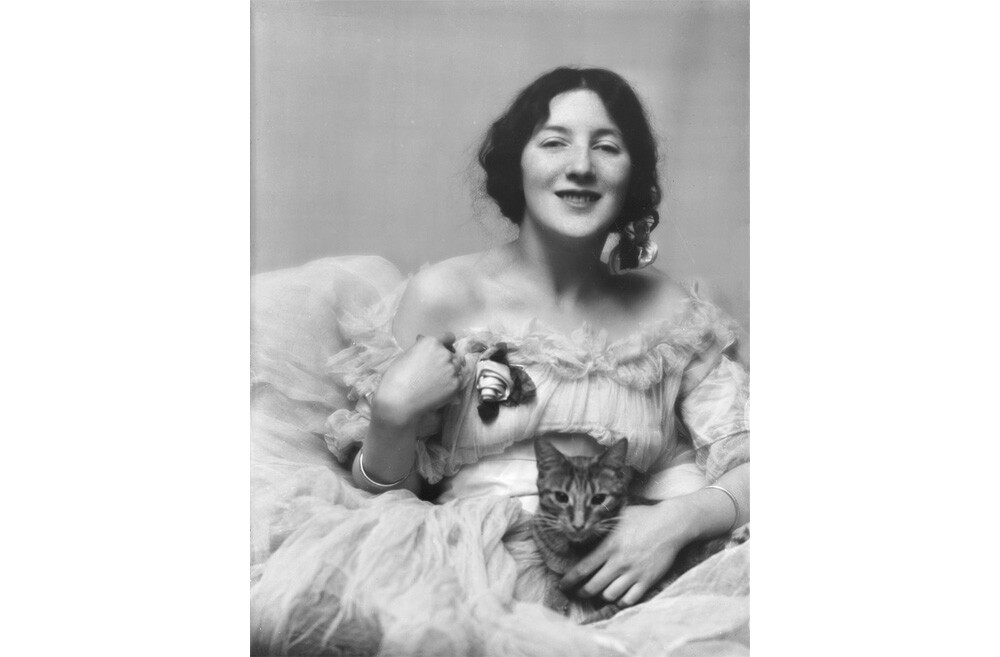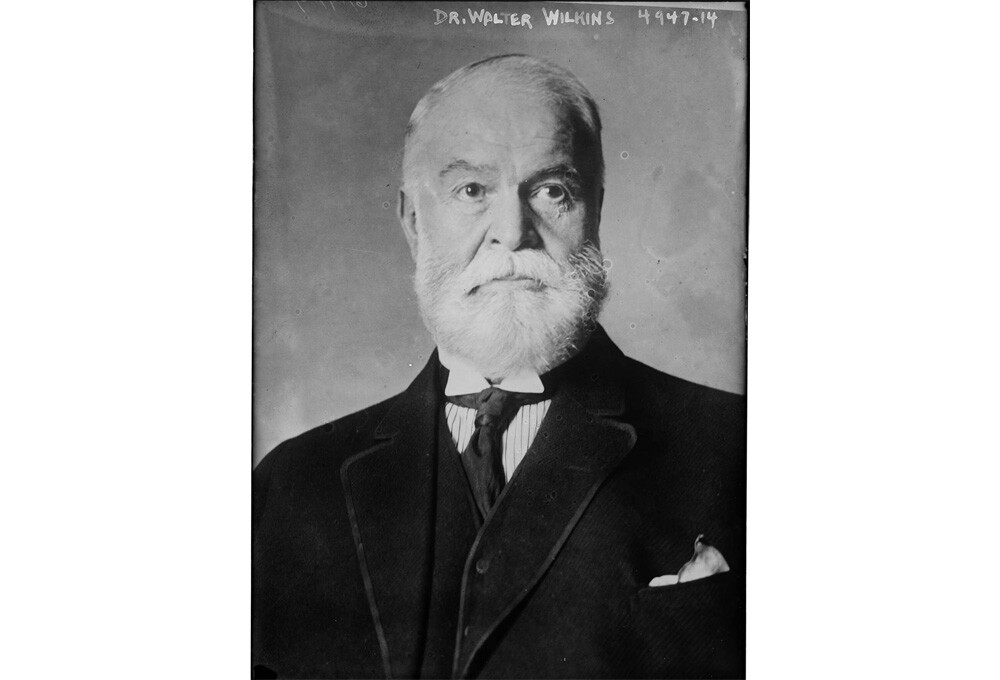5 Actual Headlines From History That Sound Like Deranged Gobbledygook

Weird stuff hits us so fast, we almost don’t have time to list it all for you. We must never abandon our mission and let these strange headlines vanish undocumented. So today, we’re going to reach back and grab some stories we missed—not stories from the past week or the past month but rather a series of tales from almost exactly 100 years ago. This was a primitive time in terms of medicine, law, and animal control, leading to such incidents as when ...
A British MP Died Removing All His Teeth To Cure His Blindness
Aubrey Herbert was half-blind, a major handicap for one reason: He wanted to fight in the Second Boer War. They turned him down because of his poor eyesight. A decade later, however, he did fight in The Great War, and we’ve told you about one of his stranger adventures there—his side and the Turks ceased fire for a day to bury the dead together. Unfortunately, it sounds like the rest of his time there was a disaster, and he ordered a special racehorse so he could retreat from failures more speedily.

via Wiki Commons
Twice—once in 1914 and once in 1920—Albania offered to make him their king because he'd fought politically for their independence. The new throne of Albania did not come with great riches but instead required the king to donate a fortune every year, so Herbert had to turn them down. They went with their second-choice pick, a German prince, who allegedly owned a black book containing the names of “47,000 highly placed British perverts.”
For the last five years of his life, Herbert was a member of Parliament. As though that weren’t bad enough, in a matter of a few months, his brother died and he lost the remainder of his eyesight. A doctor advised him of a potential cure: He could get his eyesight back if the doctor only extracted all of Herbert’s teeth. That might not sound very logical to you, but think about the last blind person you met. They probably had teeth, right? So it only stands to reason that if they had no teeth, they would not be blind.

“Fortune favors the brave, Aubrey! Now open wide and say ARRGH!”
Seriously, though, a fringe theory at the time suggested that if doctors removed your teeth (and other organs, such as your tonsils and even colon), you would suffer less infection and become far more healthy. Instead, as so often happened with early surgeries, the shoddy operation gave Herbert an infection, one that killed him. Yes, a Conservative MP named Colonel The Honourable Aubrey Nigel Henry Molyneux Herbert died from getting all his teeth removed. This is a thing that happened, not a lie we invented to make fun of British people.
Milk Flooded D.C., And Cats Feasted
Let us describe a disaster that you, the hero, must avert to save Washington, D.C. On August 9, 1922, coming down the street, is a car, driven by one Fergus J. McOsker. On the other end of the street is a truck, a milk truck from the W.A. Simpson Dairy carrying 300 gallons of creamy white goodness. If you take no action, these two vehicles traveling at blazing 1920s speeds will collide, overturning the rickety truck and letting the milk bottles crash to the ground.
No one flew in and acted, and so the milk did spill, leading to much crying. And then, the many stray cats that inhabited this district of D.C. at the time swept in to lap up the milk. The cats were “unmolested,” The Evening Star reported; we should certainly hope that was the case. The paper gave this story the headline “Cats Find Joy When Collision Overturns Milk.” We heard of it through the Twitter account @100YearsAgoLive, who also provided a completely unrelated staged 1925 photo of a New York cop stopping traffic for a cat carrying kittens across the road.
You’ll notice that the newspaper listed the home addresses of both injured drivers. That might sound like a superfluous and potentially dangerous detail to include, but you must realize the 1920s were a simpler time. Home addresses were just minor elements that identified you, and publicizing them did not necessarily directly call on people to harass or kill you.
This was a happy story for the cats of Washington, D.C. Until you remember that cats are lactose intolerant. This joyous feast of unmolested cats surely led to torrents of sour cat shit blasting our nation’s capital. The stink lingers to this day.
The Army Came In When Snow Collapsed A Theater
The milk spill was not the worst disaster in recorded D.C. history—even the most pessimistic assessments list it as number 2. That biggest disaster happened in January of that year. That month saw the biggest snowfall in over three decades, with two feet falling in little over a day, but that wasn’t the disaster. The disaster came when, with much of the city still at a standstill, 500 people went to watch a funny movie at the Knickerbocker Theatre.

The Knickerbocker called itself “the Titanic of theaters,” leading many historians to later say, “Awww C’MON! Seriously?” Like the Titanic, the Knickerbocker was luxurious but is best known for its disastrous destruction: On January 28, the roof collapsed under the snow’s weight, killing nearly 100 patrons. Also like the Titanic, the orchestra continued to play music even during the disaster (in this case, during those seconds between when the roof began falling and when it landed on everyone’s heads).
For the rescue effort, D.C. summoned the army, men stationed at Fort Meyer in Arlington. Major George S. Patton led the charge. Patton was recovering that day from an allergic reaction to seafood he'd eaten, so he was feeling especially itchy, and as with the last time we noted Patton leading an effort in D.C., his presence makes the whole thing extra surreal. The army being there was always going to be weird, though. The difference between the army coming in and, say, the fire department arriving with rescue plans was that the army had orders to shoot if necessary.

The dead had been watching a silent film called Get-Rich-Quick Wallingford, and we’d urge you to watch it yourself in their honor, but you can’t. The film is lost; no copies remain. Besides, to get the full experience, you’d need that live orchestra playing the score for you, and that might not be such a good idea. According to one theory, espoused at the time by “several noted scientists and experts upon sound action,” the specific musical notes that the musicians played may have been the trigger that loosened the roof supports and brought the house down.
The First Supermodel Went To An Insane Asylum After A Suitor Killed His Wife
Dozens of statues in New York City are modeled after Audrey Munson, who lived a century ago. That’s not because they aim to honor a famous figure. It’s just because everyone thought Munson had the perfect body—the statues used her as a model; they don’t depict her. She even served as the model for a figure on a U.S. coin, but the figure is supposed to be Lady Liberty, not her.

Munson has been called the world’s first supermodel, but her career crashed to an end. Partly, this was due to controversy over her appearing totally nude in movies, and partly it was because her landlord killed his wife.
This landlord was Dr. Walter Keene Wilkins, and when police came to his home on February 27, 1919, they found his dead wife in his arms. Someone had bashed her head 17 times—a gang of robbers, said Wilkins. The doctor’s story didn’t hold up. Police found a bloody hammer buried in his yard, wrapped in pages of a newspaper, with the remainder of that same newspaper in the man’s coat pocket.

Wilkins gave a statement to the press. “I know I am under police suspicion in connection with the murder of my wife. She was a good wife, a good nurse, my companion, and the person from whom I got my money.”
That last bit sounds like a bafflingly needless admission of motive, but he had a reason for stating it. Wilkins did murder his wife, but not for her inheritance (or at least not just for her inheritance). He had fallen for Audrey Munson and murdered to remove his wife as an obstacle, and it appears he was emphasizing the money to distract from this. Regardless, a jury found him guilty, and so Wilkins was headed for the electric chair. He never made it there. Before his execution date, he hanged himself in the jail’s bathroom.
Audery’s career imploded. Before, she’d claimed this was because an ex of hers, the richest bachelor in the country, belonged to a German secret society that controlled Hollywood, but things got worse post-Wilkins. In 1922, she followed his example and tried killing herself, and when that didn't work, she got really weird. She started calling herself Baroness Audrey Meri Munson-Monson, which is the strangest name we’ve heard since Colonel The Honourable Aubrey Nigel Henry Molyneux Herbert.

Audrey’s mother committed her to an insane asylum in 1931. And she stayed committed till her death ... 65 years later. We know we started this section by saying Audrey Munson lived “a century ago,” but she was still alive in 1996, at the age of 104. Then she died and was buried in an unmarked grave.
We’d invite you to celebrate her by watching her four movies, all of which featured her nude, but most of these are more examples of movies of the era that are now forever lost. Only one still exists: Purity, a film that was outright banned in some U.S. states when it was first made. That photo with the tiger rug above is from Purity. After many decades of being presumed lost, one copy of the film was discovered in a private collection of French porn.
A Vagrant Who Confessed To Murder Got Off Thanks To A Passionate Court Defense ... From The Prosecutor
When someone murdered a Connecticut priest in 1924, the state had a pretty strong case against their suspect, Harold Israel. They'd found the drifter illegally carrying a gun, the very gun that ballistics experts said killed Father Hubert. Seven eyewitnesses said Harold did it (the priest was murdered in public at a busy intersection). Plus, Harold confessed to the crime, which usually counts for something.

One person remained unconvinced, however: the state’s attorney, Homer Cummings. Independent of the official investigation, he launched an investigation of his own. He questioned the witnesses whom the state had already interviewed, and he found them wanting. He consulted his own separate ballistics experts. As for the confession, he read through the longer transcripts and found Harold’s story was incoherent till police prompted him on what to say. The man had confessed after 28 hours of interrogation and later recanted this confession once he had enough energy to reconsider.
Cummings visited the scene of the crime and the various spots where the witnesses stood and concluded that no one could have seen what they claimed. The intersection, for example, was too dark. One witness farther down the street, who saw a black revolver, should have instead seen Harold’s revolver glint due to its nickel plating. One restaurant where a witness ate held a partition that obscured their view of the street.

No good case stood against Harold Israel, concluded Cummings. When a state’s attorney decides that, we were under the impression that he can simply decline to prosecute and leave it at that. Instead, Cummings went to court with the case that his own office had put together and dismantled it, publicly, point-by-point, for 90 minutes.
Important note: Cummings was not doing this so he could bring a stronger case against a different suspect. No other suspects existed, and the case remains unsolved a century later. Enormous public pressure demanded that the state convict someone—twelve thousand people had attended the funeral for this assassinated priest—but Cummings put on this show to teach everyone a lesson. “It is just as important,” he told the court, “for a state's attorney to use the great powers of his office to protect the innocent as it is to convict the guilty."

It’s a moral position, but also, are you really supposed to be saying that?
The judge accepted Cummings’ move to drop charges, making Harold Israel a free man. Sadly, Cummings did not fare so well: Thanks to backlash over how he bungled this famous case, his own career ended, and he vanished into obscurity.
Just kidding. Cummings went on to become Attorney General of the United States. Then in 1947, when he learned Hollywood was making a movie out of the Harold Israel case, he tracked the man down, found that the guy was doing pretty well, and got him a huge payday from the movie studio.
The film, Boomerang, is NOT lost, and you can find it on streaming today. You also might find it even more entertaining to just read Cummings’ entire court speech. That speech would never make its way into a movie unabridged. Theater audiences wouldn't have the patience to listen to it all. YouTube audiences might, though.
Follow Ryan Menezes on Twitter for more stuff no one should see.
